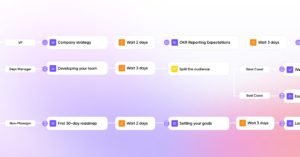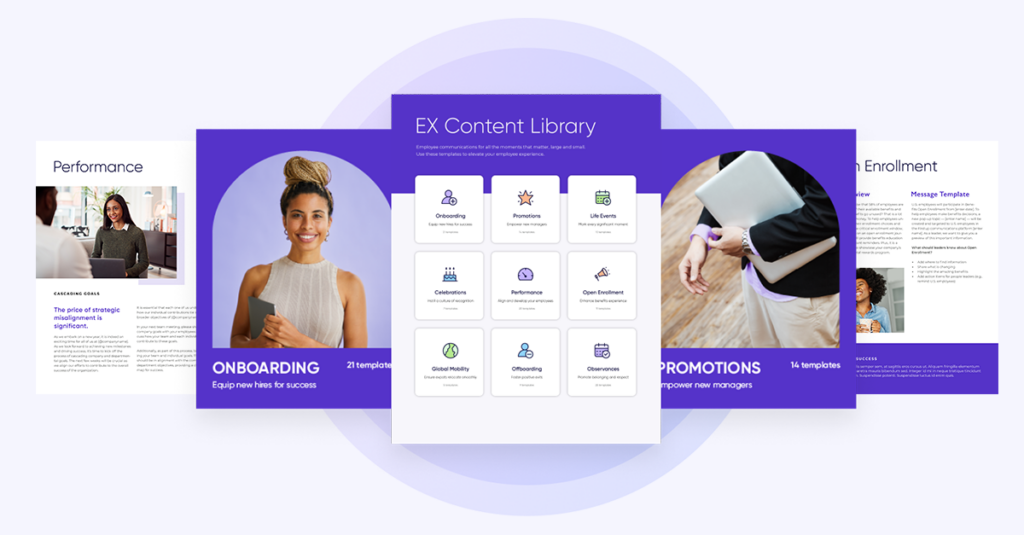September 2024—Firstup, a leading employee experience platform, conducted a survey of 1,000 U.S. adults working full- or part-time who identified as stressed, revealing a troubling trend in the workplace. According to Firstup’s Workplace Communication & Wellbeing Survey, 60% of respondents consider their job to be a significant source of their stress, and this is having a profound impact on their work and wellbeing.
The impact of workplace stress
The data paints a clear picture: Stress in the workplace is pervasive, with over half (55%) of respondents reporting that stress contributes to feelings of burnout. Additionally, 48% say that stress diminishes their motivation, and 37% believe it negatively affects their overall work performance.
Despite these alarming figures, many employees are either unaware of the benefits available to them or find the offerings unappealing. One-quarter (25%) of respondents say they either don’t know where to find information about wellness benefits or the information was never communicated to them, and 22% find the options unsatisfactory. This disconnect suggests that employers may not fully understand their employees’ needs or how to effectively promote available resources.


The need for wellness programs
The survey highlights a significant demand for wellness programs, yet these resources are not being fully utilized. While 53% of respondents have either used their company’s wellness benefits or plan to do so, 33% claim their employers don’t offer any such benefits. Among those who do have access to wellness programs, only 28% have actually taken advantage of them, and 23% are unlikely to do so. These figures suggest a disconnect between the availability of wellness resources and employees’ awareness or perception of their value.

Communication gaps and missed opportunities
One of the most telling findings of the survey is the role of communication — or lack thereof — in the underutilization of wellness benefits. A surprising 15% of employees are unaware of whether their company even offers wellness benefits, pointing to significant communication gaps. The survey also found that, while 48% of organizations rely on email to communicate these benefits, this approach may not be effective for the 54% of workers who are either deskless or spend only part of their day connected to email.



Other communication methods — such as initial onboarding sessions (17%), intranet (15%), and collaboration tools like Slack (10%) — are also being used, but they seem insufficient in bridging the awareness gap. In fact, 42% of respondents either don’t know how their company communicates wellness benefits or claim that their employer doesn’t communicate this information at all.
Bridging the gap
To address these challenges, employers need to rethink their approach to communicating wellness benefits. Nearly a third (32%) of employees say they would be more likely to use these benefits if the information was easier to find, and 25% would be more inclined to participate if they knew more about the available options. This points to a crucial opportunity for companies to improve how they promote and deliver wellness resources.

Employers should consider implementing an intelligent communication platform like Firstup to deliver wellness information to employees when they need it most. HR communications are vital in promoting wellbeing, but desk-based employees are often overwhelmed with information, which can add to their stress. Furthermore, deskless workers on the frontline never even receive the information because they don’t have access to email or other communication tools.
By using a platform like Firstup, you can create a more employee-centric experience similar to what we experience in consumer marketing. Employees would receive personalized, relevant updates through their preferred channels — ensuring that wellness messages are timely, targeted, and effective, while also allowing HR to gather valuable feedback in real time.
By enhancing communication and making wellness benefits more accessible, companies can better support their employees, reduce workplace stress, and ultimately create a healthier and more productive work environment.
The findings from Firstup’s survey underscore the urgent need for employers to address workplace stress through better communication and more effective wellness programs. By doing so, they can foster a culture of wellbeing that benefits both employees and the organization as a whole.
For more tips on improving employee wellbeing and reducing workplace stress, read this blog.
METHODOLOGY
Firstup surveyed 1,000 U.S. adults who work full- or part-time who identified as stressed. The survey was conducted in August 2024 via Pollfish, an online survey platform.
Download PDF








